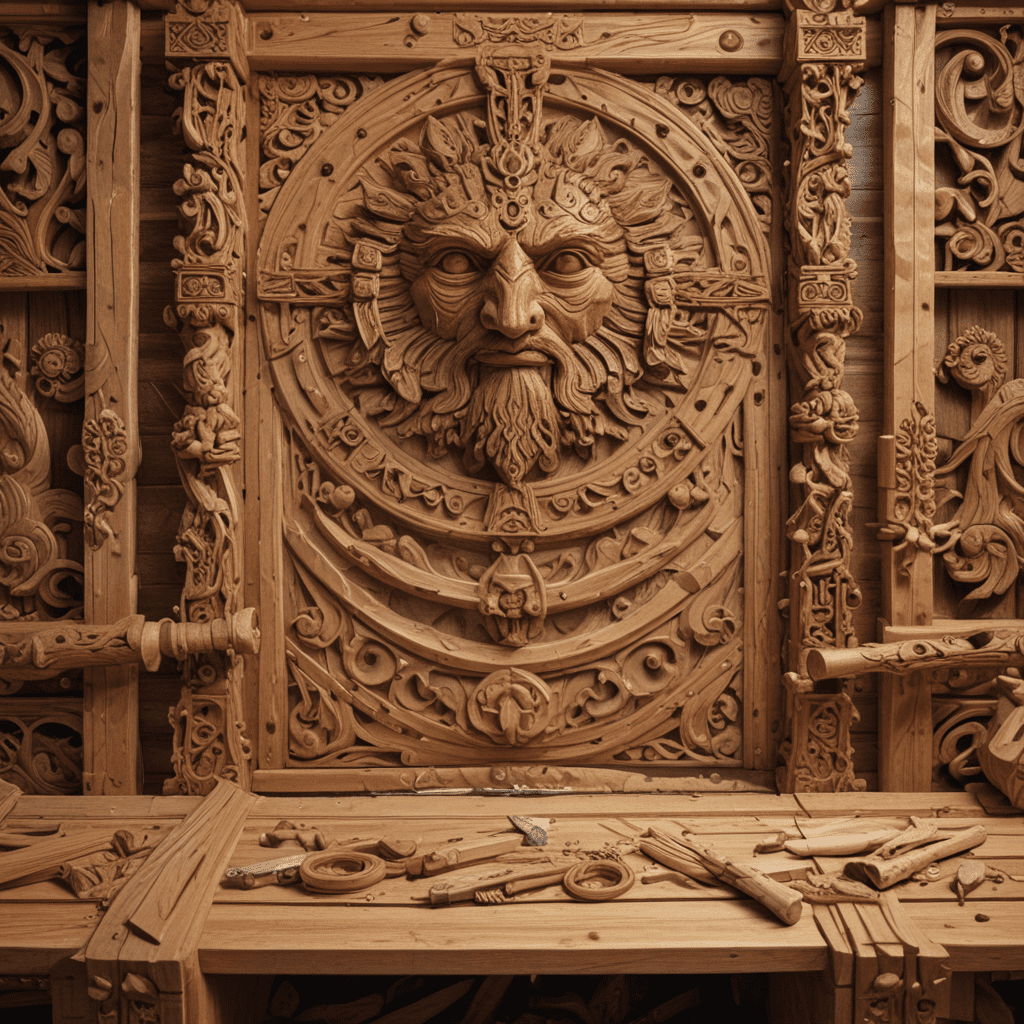Slavic Mythology: The Art of Woodworking and Carpentry
From the vast forests of ancient Slavdom, the enigmatic tales of Slavic mythology have woven a rich tapestry of beliefs and traditions that have left an enduring legacy on the art of woodworking and carpentry.
Legends and Beliefs
Slavic mythology bestowed upon trees a profound spiritual significance. The towering oak, revered as the "World Tree," symbolized the cosmic axis connecting heaven, earth, and the underworld. Its bark represented boundaries between realms, while its branches reached towards the celestial heavens. Forests were considered gateways to otherworldly dimensions, where spirits and deities dwelled.
The Sacred Tree
In Slavic mythology, trees were not mere inanimate objects but vibrant beings with souls, spirits, and consciousness. The birch, with its delicate white bark, was associated with purity and fertility. The aspen, trembling in the slightest breeze, was believed to possess healing powers. And the willow, with its weeping branches, symbolized sorrow and mourning.
The Forest as a Spiritual Realm
Slavic mythology imbued the forest with a profound spiritual aura. It was seen as a sanctuary, a place of connection with the gods and spirits. Rituals and ceremonies were often performed beneath the leafy canopy, where the rustling of leaves carried whispers of the unseen world. The forest was a place of both danger and enchantment, where encounters with mythical creatures were commonplace.
Wood as a Symbol of Life and Death
In Slavic mythology, wood was a potent symbol of both life and death. The cradle of a newborn was carved from wood, representing the child's entry into the world. Conversely, the coffin that carried the dead to their final resting place was also made of wood, symbolizing their passage into the afterlife. Woodworking was seen as a sacred art, imbued with the power to bridge the gap between the living and the deceased.
Woodworking as a Craft
In Slavic mythology, woodworking was not simply a trade but a sacred craft. The ability to transform raw wood into intricate carvings and durable structures was seen as a gift from the gods. Woodworkers were revered for their skills and were often called upon to create sacred objects and ceremonial buildings.
Carpentry in Slavic Mythology
Carpentry held a special place in Slavic mythology. Houses, churches, and other important structures were built from wood, and their design and construction reflected the beliefs and customs of the Slavic people. Houses were believed to be living entities, with their own spirits. Special rituals were performed during the construction of a house, to ensure the well-being of its occupants.
The Symbolism of Wooden Structures
Wooden structures in Slavic mythology often carried deep symbolic meanings. The rounded roofs of Slavic houses, for example, represented the shape of the sky. Windows were seen as portals to the otherworld, and doorways were often decorated with protective symbols to ward off evil spirits. The carvings that adorned wooden structures depicted scenes from mythology, nature, and everyday life.
The Influence of Slavic Mythology on Woodworking Techniques
Slavic mythology significantly influenced the development of woodworking techniques. The use of wood carving, joinery, and other traditional techniques has been passed down through generations of Slavic craftsmen. These techniques are still used today to create beautiful and functional objects that reflect the rich heritage of Slavic culture.
Preservation and Revival of Slavic Woodworking Traditions
In recent years, there has been a growing interest in preserving and reviving the woodworking traditions of the Slavs. Craftsmen and scholars are working to document and revive traditional techniques, and new generations of woodworkers are learning the ancient skills of their ancestors. The art of Slavic woodworking continues to thrive, carrying the legacy of its mythical origins into the modern world.
FAQ
Q: Why was wood so important in Slavic mythology?
A: Wood was revered in Slavic mythology as a symbol of both life and death, and as a sacred material that could bridge the gap between the living and the deceased.
Q: What was the significance of the "World Tree" in Slavic mythology?
A: The "World Tree" was the most sacred tree in Slavic mythology, and it was believed to connect heaven, earth, and the underworld. Its branches reached into the celestial heavens and its roots extended into the depths of the underworld.
Q: How did Slavic mythology influence woodworking techniques?
A: Slavic mythology influenced woodworking techniques in a number of ways, including the use of wood carving, joinery, and other traditional techniques that have been passed down through generations.
Q: What is the significance of wooden structures in Slavic mythology?
A: Wooden structures in Slavic mythology often carried deep symbolic meanings, including the rounded roofs of houses representing the shape of the sky and windows being seen as portals to the otherworld.



